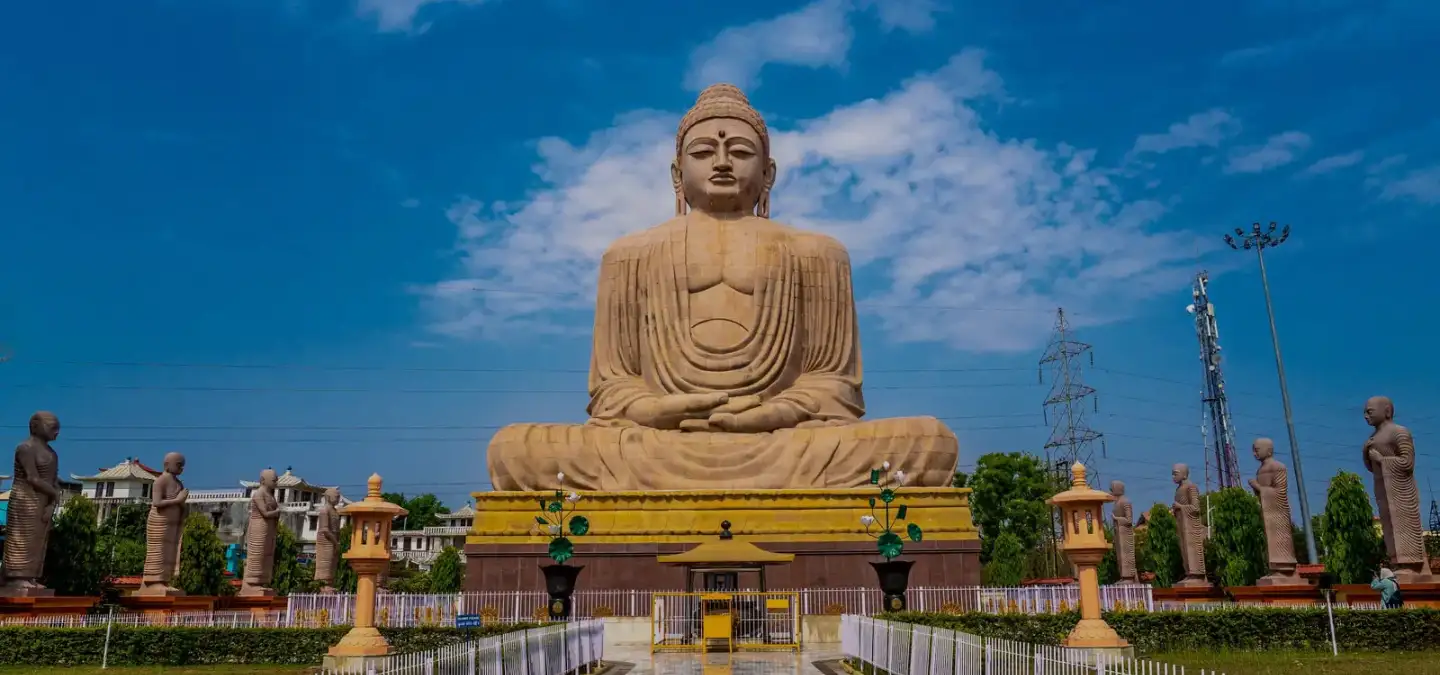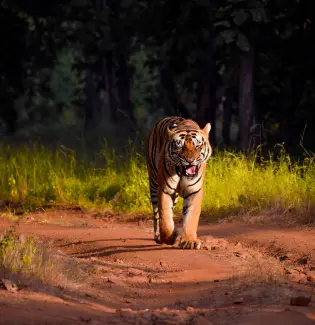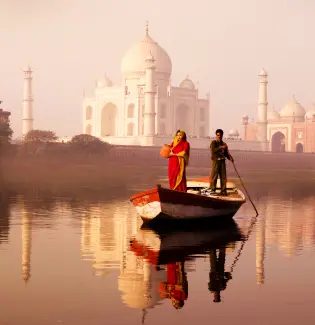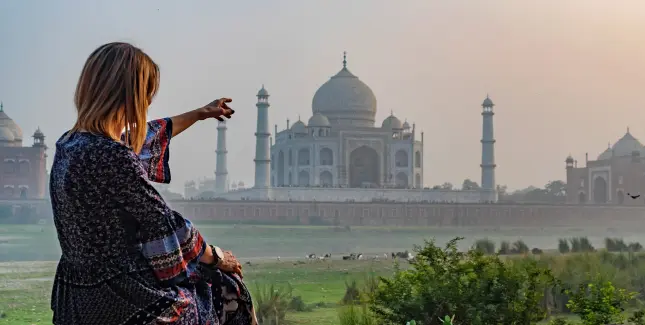Day By Day Itinerary
-
DAY 1
Reaching Gaya/Bodh Gaya
After arrival at Gaya, drive to Bodh Gaya a distance of 13km and check into a hotel. Treat yourself to a tour of this holy seat of the Buddhist religion. It is the place where Gautam Buddha received clarification as he was meditating under a Bodhi tree. Besides a fine temple, it also has the offshoot of the tree that provided a shade to Buddha. Emperor Ashoka’s queen had destroyed the original tree but its sapling was saved in time and was later planted in Sri Lanka by his daughter. A sapling of the tree was brought back to Bodh Gaya and still stands to tell the account.
Monasteries and meditation centres have been set up in Bodh Gaya by Buddhist nations like Japan, Thailand and Burma. Examples are the IndosanNipponji temple, the Thai monastery, the Tibetan Karma Temple together with the Namgyal Monastery and others by the Burmese, Chinese, Bhutanese, Vietnamese, Tamang, Daijokyo and the Nepali Buddhist community. In October and March, Dharamsala monks descend to Bodh Gaya. The Dalai Lama visits in December and January. The world heritage site is the Mahabodhi temple. It was built in the 6th century AD adjacent to the sight of the enlightenment. Muslim invaders attacked and plundered the temple. It was rebuilt a number of times. Get back to the hotel and spend the night.

-
DAY 2
Bodh Gaya-Dungeshwari Caves-Gaya
Proceed to Dungeshwari Cave temples after breakfast about 13 km from here. T this location, Buddha spent years of atonement before getting ‘nirvana’ or clarity. A post lunch visit to the Brahmajuni Hill in Gaya is inevitable. This place is believed to be the sight of Buddha’s fire sermon. There is also a cave and a temple at the hilltop. Spend the night at the hotel.

-
DAY 3
Bodh Gaya-Rajgir
Leave for Rajgir after breakfast which is 70km or 2hrs away by road. After arrival at Rajgir, check into a hotel. The Magadha kingdom had Rajgir as its capital. It is a place of pilgrimage for Jains and Hindus as well. Japanese Buddhists have built a huge VishwashantiStupa on the Ratnagiri Hill which can be accessed by a chairlift. The stu[pa has the four stages of Buddha’s life namely birth, enlightenment, teaching and death. The Jain shrines can also be viewed scattering across 26 distant hills from the top of the hill. There is also another site where Buddha stopped to preach located on Ratnagiri Hill. Get back to the hotel for a night stay.

-
DAY 4
Rajgir- Nalanda
After your breakfast, move on to Nalanda which is 12km away. The Nalanda University Ruins Archaeological Complex spread over 14 hectares and is set amidst expansive lawns and offset the spectacular layout and carvings of this ancient university. A central valley separates the monasteries and the viharas. There are interesting structures that you can view like the steps that lead up to maybe a dais for the professors and stupas with Buddha’s images carved in. According to the Chinese traveller Xuan Zang who was taught at the university during the 685 and 762 AD, 10000 monks and professors resided here at the time. After touring the ruins, take a walk to the Xuan Zang Memorial Hall which is a Chinese Pagoda that was built by the Chinese Buddhist. Go back to the Rajgir hotel for the night.

-
DAY 5
Rajgir- Patna
Proceed to Patna by road, 80km away after breakfast. Check into a hotel after arriving at Patna. Patna is the capital city of Bihar and it can be used as a base to visit the Buddhist sites of Vaishali and Kesariya. The site also rests on its ancient past as Pataliputra which is the capital of the many dynasties that ruled over the region.
Take a local sightseeing tour of Patna after lunch. This should be inclusive of Golghar that was built as a granary, Gandhi museum and Patna museum, Har Mandir Takht, Qila House or Jalan Museum which has some really rare relics like Napoleon’s bed and Marie Antoinette’s porcelain together with the ruins of Pataliputra. Go back to the hotel to spend the night.

-
DAY 6
Patna-Vaishali-Kesariya
Leave for Vaishali which is 44km after an early breakfast. It is the site at which Buddha delivered his last sermon. The 2300 year old Ashoka pillar is enclosed in the Kolhua complex. Also built here is a Japanese Peace Pagoda. Proceed to Kesariya 70km away. It is the site at which Buddha gave away his begging bowl before taking his last breath. There is also an excavation of a massive Buddhist stupa that was built during the rule of the Pala kings. Get back to Patna for a night stay.

-
DAY 7
Patna-Kushinagar-Gorakhpur
Leave for Kushinagar 220km away by road after breakfast. You may also board a train to Gorakhpur and later take a drive of about 55km from there to this town of history. Check into a hotel after your arrival at Gorakhpur. It is at this place that Buddha lost his life having left a message for the entire mankind to reach out for their salvation. Quite a number of monuments were erected by the devotees from all over the world on this holy site along the Buddha Marg. Among them are; Vietnams Linh Son Buddhist temple, meditation centre and gardens, the Burmese MahasukhamdadachamThargyi Pagoda, the Mahaparinirvan Temple with a serene and reclining Buddha and the Matakhuar Temple, the Japanese temple in Sri Lanka and the Wat Thai Temple.
The place where Buddha was cremated is known as the RamambharStupa or the MakuthbandanStupa. Get back to Gorakhpur to spend the night.

-
DAY 8
Gorakhpur-Varanasi
Leave early to catch a train destined for Varanasi which is some 5 1/2 hrs from Gorakhpur. Check into a hotel after reahing Varanasi. Head for Sarnath after a short break, It is 10km from Varanasi. It is here at Sarnath that Buddha gave his first sermon to a couple of followers after gaining nirvana. Some Muslim invaders destroyed monasteries and stupas some years after Emperor Ashoka had them built. In 1835, British archaeologists discovered some remains here. Sarnath has its place as one of the four chief sites of the Buddhist religion. The other sites are known as Bodh Gaya, Kushinagar and Lumbini in Nepal. Take part in or view the ‘Gaanga aarti’ in the evening, it is a spiritually uplifting experience that is used to pay homage to the holy river. Spend the night at a hotel.

-
DAY 9
Varanasi-Delhi/Mumbai/Onward destination
Leave for a visit of the holiest cities for the Hindus after breakfast. The life line of the city is known as the River Ganga. It is along its banks that all the spiritual and religious activities are performed. It is also nice to take a cruise along the river between the DasaswamedhGhat and HarishchandraGhat and tour the temples. An evening flight to Delhi or your preferred destination is prudent.








